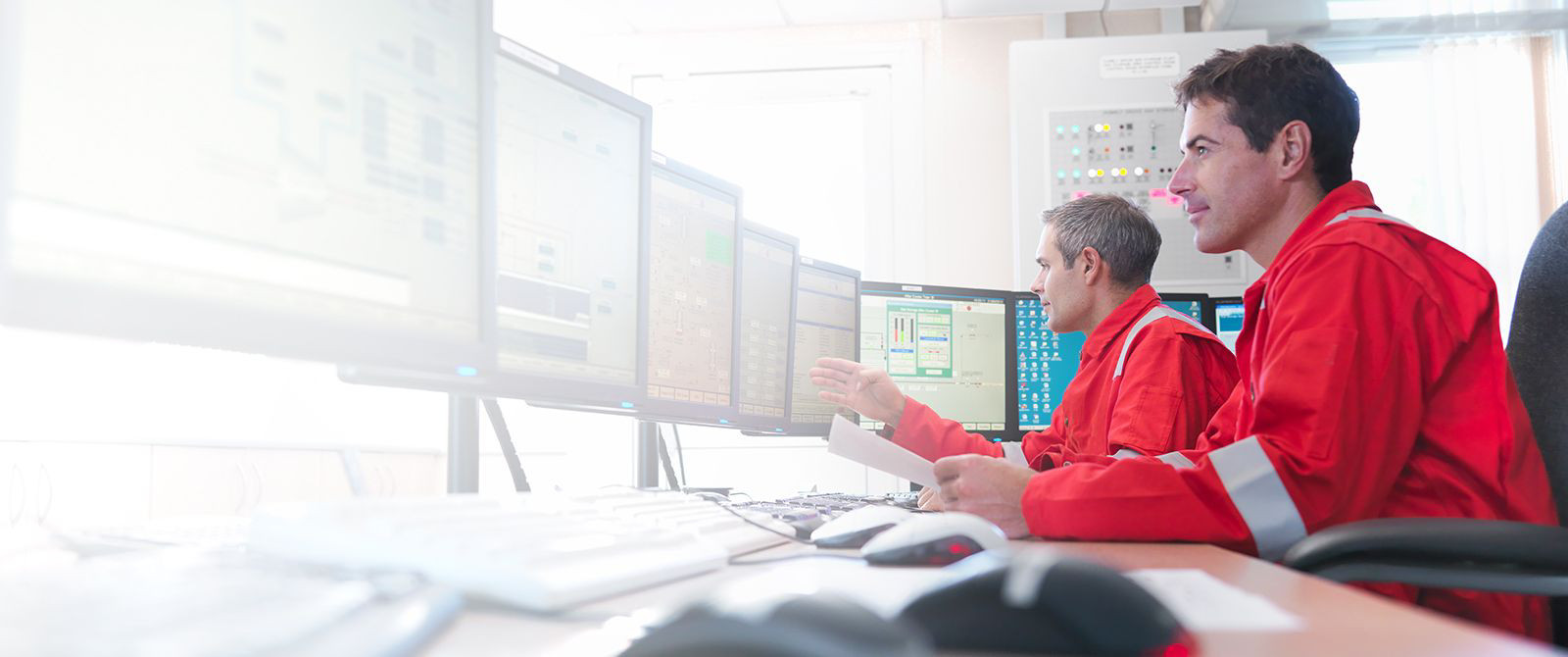International Energy Agency scenario projections indicate that oil and gas will continue to account for more than 45 percent of the global energy mix in 2040. Demand for oil and gas also continues to rise outside the energy sector, for example in petrochemical industries. While meeting the world’s growing energy needs, the energy companies must make ambitious plans to reduce their environmental footprints.
This is what happens at Aker BP and Wintershall DEA. Aker BP’s goal is to achieve a 50 percent emission reduction in the 2030s and close to zero emissions in 2050. The company’s emissions are already less than one-third of the average in the global industry. The climate target at Wintershall DEA is similar: to reduce greenhouse gas emissions of upstream activities (Scope 1 and 2) at equity basis by 2030. The company has also set clear targets for reducing methane emissions throughout the gas supply chain.
How they do will reach the targets? Digitalization is an essential part, and I will get back to the companies’ initiatives later in the text.
Want to learn about sustainable innovation? Go here to download our report
Sustainability influences digital
One thing is clear: inventing sustainable business models also influences the digital strategy. Many digital-first approaches can make upstream operations more sustainable; from data availability and transparency to production optimization and energy management; from emissions to air reduction to autonomous operations. Data is the common thread across initiatives.
How do you succeed then? From my viewpoint, based on experience from several projects within the energy industry, there are a few elements that need to be in place when linking digitalization strategies to advancements in sustainability:
- Involving the leadership. Leadership involvement is critical to execution. It is not enough to translate net-zero goals; the company also needs to stay committed through the reduction initiatives process.
- Re-architecting processes and models. A significant re-architecture of product and supply chain, as well as new data interpretation models, are required. This primarily ensures that sustainability initiatives do not work at cross purposes.
- Driving operating levers. Analyze your footprint, drive initiatives and use data to find the operating levers. The design of a flexible data model will mitigate effort in pursuing large volumes of data.
Involving the organization
As mentioned, involving and getting a commitment from the whole organization is important to succeed with transformation. According to Hege Fjell Urdahl, Vice President Integrated operations, Aker BP, the emission strategy should be at the top management level to get an impact across the company. There must be full alignment between the digital agenda and the management.
Reinforcement of a needed behavior and organizing around shared beliefs are also important. Kathrin Dufour, Senior Vice President Digitalization & Technology, Wintershall DEA, says that one should never underestimate the change process. Here, new processes have been implemented through change teams with a focus on capability management and competence training.
Industry 4.0 as a model to drive down emissions
Any specific initiatives that have had an impact on sustainability metrics at Aker BP and Wintershall DEA?
At Aker BP, one of the climate targets is about going below 5 kg CO2 per barrel of oil equivalent. Here, data visualization is used to monitor and highlight the pressure on the production line. The insights make it possible to tune equipment like turbines to reduce emissions. The visualization is also used to track fuel use in the supply vessel fleet; the crew is provided with real-time data to help optimize vessel routes and reduce emissions. Another area is remote operations. This year, the focus has been on turning onsite crane inspections into remotely supported inspections to avoid offshore travel.
At Wintershall DEA, use cases are going in the same direction. Its energy management system is placed on the company’s cargo platform in Norway and on two German sites. It constantly gathers and displays information about energy use and emissions, enabling field workers to see where electricity is being produced and consumed, and allowing them to tackle sources of emission.
The extended scope – more sustainability metrics
Besides emissions, other sustainability metrics are also coming into place – metrics concerning suppliers, living wage, health and safety, among others. Add to this the global context; it’s important to look at how a change in an operating model creates an impact in the countries a company operates in.
Effective digitalization strategies in upstream operations will continue to contribute to meaningful advances in sustainability. If you are curious to learn more about Cognizant’s offerings in this space, please visit our Oil & Gas section.
Our experts are contributing with exciting insights about what is going on within technology and innovation.


















